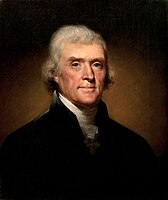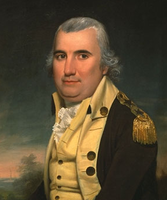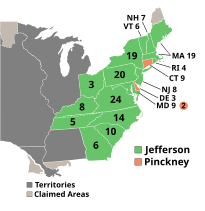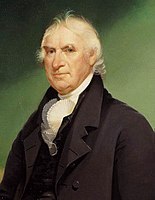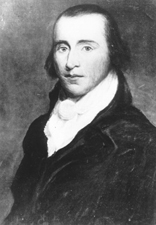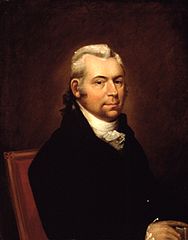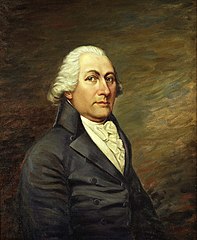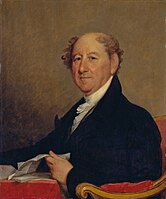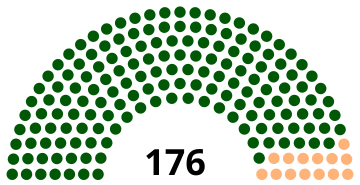|
1804 United States presidential election
The 1804 United States presidential election was the fifth quadrennial presidential election, taking place from November 2 to December 5, 1804. Incumbent Democratic-Republican president Thomas Jefferson defeated Federalist Charles Cotesworth Pinckney of South Carolina. It was the first presidential election conducted following the ratification of the Twelfth Amendment to the United States Constitution, which reformed procedures for electing presidents and vice presidents. Jefferson was renominated by his party's congressional nominating caucus without opposition, and the party nominated Governor George Clinton of New York to replace Aaron Burr as Jefferson's running mate. With former president John Adams in retirement, the Federalists turned to Pinckney, a former ambassador and Revolutionary War hero who had been Adams's running mate in the 1800 election. Though Jefferson had only narrowly defeated Adams in 1800, he was widely popular due to the Louisiana Purchase and a strong economy. He carried almost every state, including most states in the Federalist stronghold of New England. BackgroundAlthough the 1800 presidential election was a close one, Jefferson steadily gained popularity during his term. American trade boomed due to the temporary suspension of hostilities during the French Revolutionary Wars in Europe, and the Louisiana Purchase was heralded as a great achievement. NominationsDemocratic-Republican Party nomination
The congressional nominating caucus of the Democratic-Republican Party was held in February 1804, with 108 members of the United States Congress in attendance and Senator Stephen R. Bradley as its chair. Jefferson was renominated by acclamation while Vice President Aaron Burr was not considered for renomination. The caucus selected to give the vice-presidential nomination to Governor George Clinton whose main opponent was Senator John Breckinridge. A thirteen-member committee was selected to manage Jefferson's presidential campaign.[2][3] Vice-presidential candidates
Balloting
Federalist Party nomination
The Federalists did not hold a nominating caucus, but Federalist congressional leaders informally agreed to nominate a ticket consisting of Charles Cotesworth Pinckney of South Carolina and former Senator Rufus King of New York.[2] Pinckney's public service during and after the American Revolutionary War had won him national stature, and Federalists hoped that Pinckney would win some Southern votes away from Jefferson, who had dominated the Southern vote in the previous election.[4] General electionFederalist leader Alexander Hamilton's death in July 1804 following the Burr–Hamilton duel destroyed whatever hope the Federalists had of defeating the popular Jefferson. Leaderless and disorganized, the Federalists failed to attract much support outside of New England. The Federalists attacked the Louisiana Purchase as unconstitutional, criticized Jefferson's gunboat navy, and alleged that Jefferson had fathered children with his slave, Sally Hemings, but the party failed to galvanize opposition to Jefferson. Jefferson's policies of expansionism and reduced government spending were widely popular. Jefferson was aided by an effective Democratic-Republican party organization, which had continued to develop since 1800, especially in the Federalist stronghold of New England.[2] Jefferson's victory was overwhelming, and he even won four of the five New England states. Pinckney won only two states, Connecticut and Delaware. This was the first election where the Democratic-Republicans won in Maryland, Massachusetts, New Hampshire, and Rhode Island. As of 2024, Jefferson was the first of eight presidential nominees to win a significant number of electoral votes in at least three elections, the others being Henry Clay, Andrew Jackson, Grover Cleveland, William Jennings Bryan, Franklin D. Roosevelt, Richard Nixon, and Donald Trump. Of these, Jackson, Cleveland, and Roosevelt also won the popular vote in at least three elections. Jefferson, Cleveland, Roosevelt, and Trump were also their respective party's nominees for three consecutive elections. Results
Source (Popular Vote): A New Nation Votes: American Election Returns 1787-1825[5] (a) Only 11 of the 17 states chose electors by popular vote. Popular vote by stateThe popular vote totals used are the elector from each party with the highest total of votes. The vote totals of North Carolina and Tennessee appear to be incomplete.
States that flipped from Federalist to Democratic-RepublicanClose statesStates where the margin of victory was under 5%:
States where the margin of victory was under 10%:
Maps
Electoral College selection
See also
Notes
References
External linksWikimedia Commons has media related to United States presidential election, 1804.
|
||||||||||||||||||||||||||||||||||||||||||||||||||||||||||||||||||||||||||||||||||||||||||||||||||||||||||||||||||||||||||||||||||||||||||||||||||||||||||||||||||||||||||||||||||||||||||||||||||||||||||||||||||||||||||||||||||||||||||||||||||||||||||||||||||||||||||||||||||||||||||||||||||||||||||||||||||||||||||||||||||||||||||||||||||||||||||||||||
